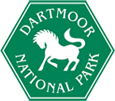Swaling Code of Conduct
Before burning you must telephone:
- Devon & Somerset Fire and Rescue Service 01392 872225
- Dartmoor National Park Authority 01626 832093
- Natural England 07733 208816 OR 07798 877441
- Dartmoor Commoners Council 01822 618892
Making these phone calls will help to ensure that no officers are sent to put your fire out.
The Legal Requirements
The burning, not only of heather and grass, but also gorse, bracken and bilberry, is controlled by the Heather and Grass, etc (Burning) Regulations 1986.
- Burning is only allowed between: 1 October - 15 April in upland areas. The National Park Authority recommends no burning after 31 March to prevent harm to nesting birds.
- Outside these dates burning is allowed only under licence issued by the Department for Environment, Food & Rural Affairs (DEFRA).
- Permission of the owner must be gained.
- At least 24 hours but no more than 7 days’ notice of intent to burn must be given in writing to the owners and occupiers of the land concerned and persons in charge of adjacent land.
- You must not start burning heather, grass, gorse, bracken or bilberry between sunset and sunrise.
- You must ensure that sufficient people and equipment are on hand to control the burn.
- You must take all reasonable precautions to prevent injury or damage.
- You must not cause a nuisance through the creation of smoke. This is an offence under the Clean Air Act 1956.
- You must contact Natural England if burning on a Site of Special Scientific Interest.
- Under the Dartmoor Commoners' Council's Regulations, arising from the Dartmoor Commons Act 1985, no person or local Commoners' Association shall burn moorland where heather is present on the commons exceeding an area of 9000 square metre at intervals of less than 12 years, nor where the distance between burns in any one year is less than 150 metres. No Person or local Commoners' Association shall burn moorland where dead grass, bracken or gorse is present on any common land unit exceeding 50 acres (20 hectares) or 25% of the area of that common land unit which ever shall be the less and such burning shall take place at intervals of no less than 3 years.
Points to Remember
Planning
- Burn in accordance with an approved long-term Fire Plan for your area, drawn up to meet agricultural and environmental objectives.
- The Fire Plan should include a programme of essential burning on a sound rotation basis and include the creation of firebreaks where necessary.
- Plan individual burns sensibly by relating size of area to manpower availability, safety requirements and forecasted weather predictions.
- Plan to avoid burning at weekends or public holidays if possible.
Timing
- Burn when there is a gentle breeze.
- Make an early start.
- Stop and re-assess if conditions change.
Place
- Choose with care the best spot to start the fire, to ensure the fire doesn't spread too quickly.
- Burn small areas at a time, paying particular attention to the optimum width of the burn.
Firebreaks
- Use firebreaks, choosing natural boundaries for the burn wherever possible.
Control
- Have sufficient manpower and equipment.
- Appoint one person to be in charge.
Landscape and Wildlife
- Take account of wildlife habitats.
- Avoid spoiling the landscape and environment.
Neighbours
- Keep them informed and take account of their property and interests.
Public Safety
- Avoid creating hazards to road users and the public.
Prosecution
- A breach of the Heather and Grass etc (Burning) Regulations 1986 may on conviction result in a fine of up to £1000.
- For SSSIs failure to give written notice to Natural England can result in a fine of up to £2500 under the Wildlife and Countryside Act 1981.
Insurance
- The Dartmoor Commoners’ Council recommend that each local Commoners’ Association take out their own public liability insurance to cover them for all activities on their common that the Association is legally liable for.
